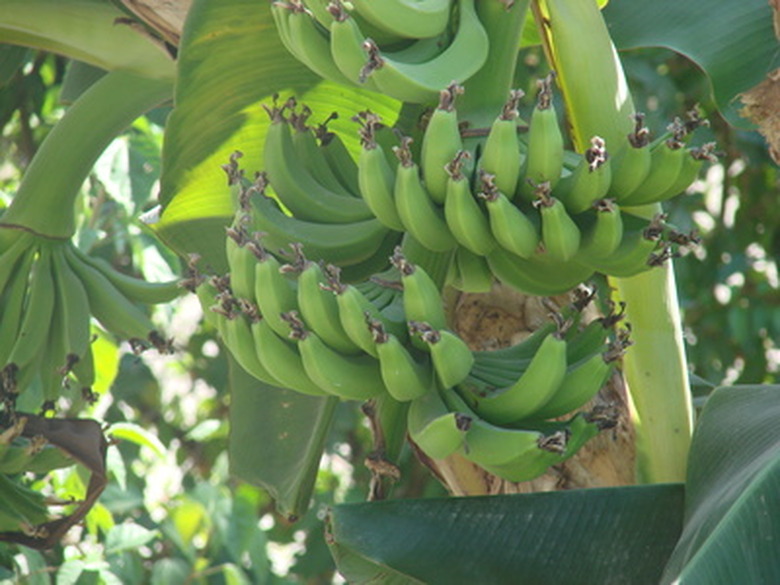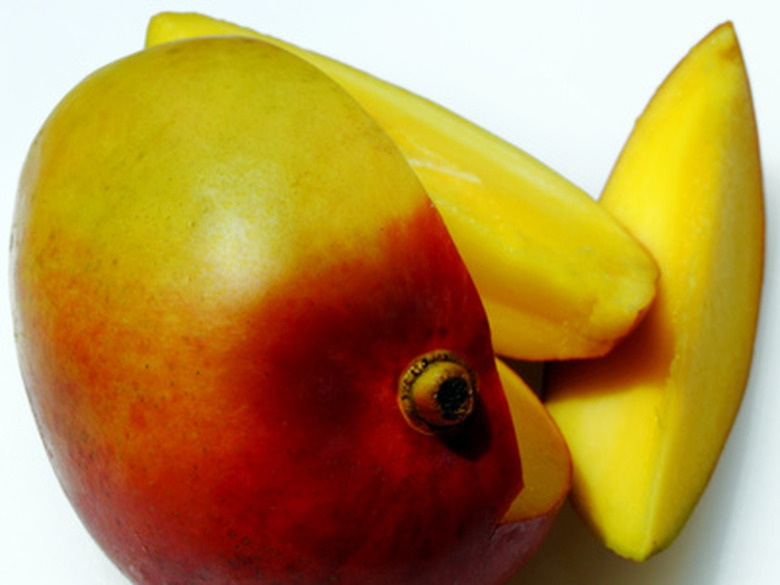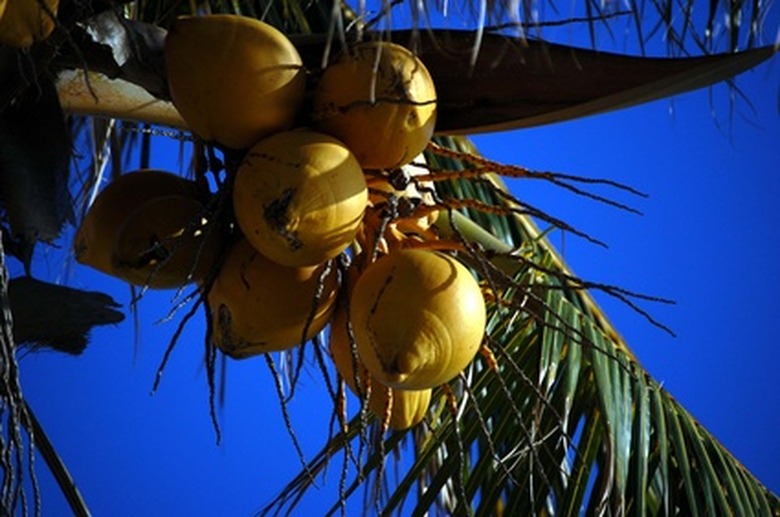Fruit Trees In Puerto Rico
Puerto Rico's climate is tropical, with average temperatures of 80 degrees Fahrenheit. Sunshine is abundant–as is rain. The mountains get the most rain, about 200 inches annually. The southern part of the island receives about 36 inches annually. A diversity of micro-climates exists in Puerto Rico–it is sometimes thought of as a "continent" in one island. Rain forests, deserts, mountains and beaches all occur on Puerto Rico. The environment gives fruit trees many opportunities to flourish. It's not uncommon for trees to provide more than one crop every year.
- Puerto Rico's climate is tropical, with average temperatures of 80 degrees Fahrenheit.
- A diversity of micro-climates exists in Puerto Rico–it is sometimes thought of as a "continent" in one island.
West Indian Sour Cherry
For such a little fruit, the West Indian sour cherry (also known as Barbados cherry) packs a healthy punch. Called acerola in Puerto Rico, a single cherry provides a full day's requirement of vitamin C. The trees produce cherry crops three times annually.
Citrus
Citrus trees thrive on Puerto Rico. Orange trees, for instance, grow all over the island. Natives like a variety they call "china nativa" best. It's small and sweet; and used in desserts like bizcocho de chinas.
The grapefruits grown on the island differ from those available in U.S. mainland markets. Available almost all year, the fruits are larger, juicier and a lot sweeter.
- For such a little fruit, the West Indian sour cherry (also known as Barbados cherry) packs a healthy punch.
- Called acerola in Puerto Rico, a single cherry provides a full day's requirement of vitamin C. The trees produce cherry crops three times annually.
Bananas and Plantains
Banana trees are ubiquitous in Puerto Rio with almost every variety of banana grown. (More than 100 varieties exist.) The trees are both cultivated and found in the wild.
In Puerto Rico, plantains are called plátanos. These are banana-like fruits that must be cooked before eating. Unripe, they're cut into ovals and fried to make tostones, a popular side dish that works as a vegetable. When plantains become black, they're very sweet and ripe, ready to be fried, caramelized or baked for desserts.
- Banana trees are ubiquitous in Puerto Rio with almost every variety of banana grown.
- ( Unripe, they're cut into ovals and fried to make tostones, a popular side dish that works as a vegetable.
Passion Fruit
The passion fruit tree is perhaps misnamed, since its fruits are said to help lower blood pressure due to the alkaloids contained in the fruit. The gelatinous interior is the edible part.
Mango
Seventeen or so varieties of mango trees are grown in Puerto Rico. Residents often own their own trees. Mangoes are an important export–with over 15,000 tons shipped to Europe and to the U.S. mainland every year, according to the Puerto Rico Tourism Company.
Avocado
Native to the Caribbean and other parts of Latin America, the avocado tree typical of Puerto Rico produces smooth-skinned fruit. It is often used for salads.
- The passion fruit tree is perhaps misnamed, since its fruits are said to help lower blood pressure due to the alkaloids contained in the fruit.
Coconut Palm
Coconut is called coco in Puerto Rico–not to be confused with the cocoa tree that gives us seeds that end up as chocolate. Though the tree isn't native to the island, cocos have become an important ingredient in Puerto Rican cooking, especially in drinks and deserts.



